A simple linen coif, based on paintings by Breughel the Elder, suitable for girls or women.
I made this coif for my friend Felicia, who needed suitable headwear to complete her new working class 16th century Flemish outfit. She wanted something simple to wear, which would disguise her short hair – and more practical in the kitchen than the Flemish Veil I had made her previously.

Research and Design
Linen coifs (or caps) were a common type of headwear for working and middle class women across Europe from the 13th-16th centuries.
Joachim Beuckelaer and Pieter Aertsen painted many wonderful images of 16th century working class women from the Netherlands. However, the foundation of the various types of headwear in these images is a pair of the braids, taped up on to the back of the head. The archetypical small cap will not work with short hair!
So I looked to other artists and found some useful images in Breughel for two simple headwear styles – a veil and a coif. This coif looks similar to the veil at the front, but is gathered at the back into a rounded shape. Although more commonly seen on girls, there are also some images of women wearing this style.

Source: Inside Bruegel

Source: Inside Bruegel
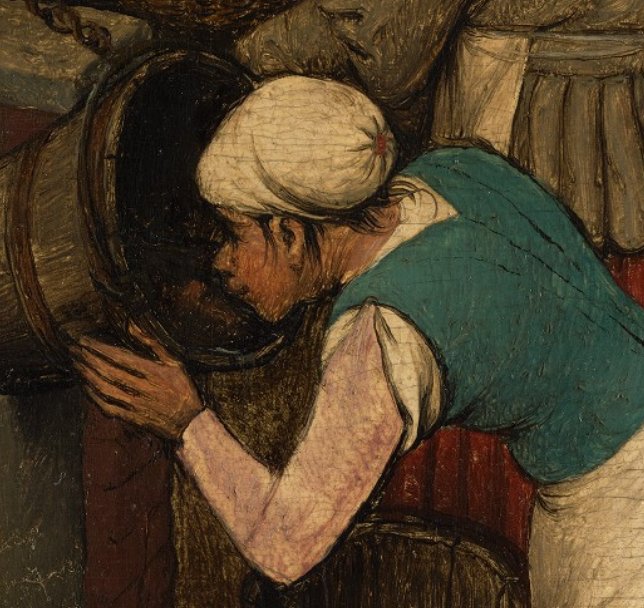
As with other headwear of this style across Europe, these coifs would have been made from white linen. It would have been worn over a foundation of taped braids, but will also work over short hair.
Construction
Since I already had a pattern for the veil, I adapted this by playing with the length at the back, so that it had the right amount of volume once gathered, used scrap fabric to test the proportions and effect of the gathering. The front looks quite stiff – a double layer gives the right effect.
Once I was happy with the result, I cut the coif out of medium weight linen, with the selvedge at the back end. I turned up a deep hem on the front edge to provide extra body and a narrow hem on the two sides, sewing these with fine linen thread.
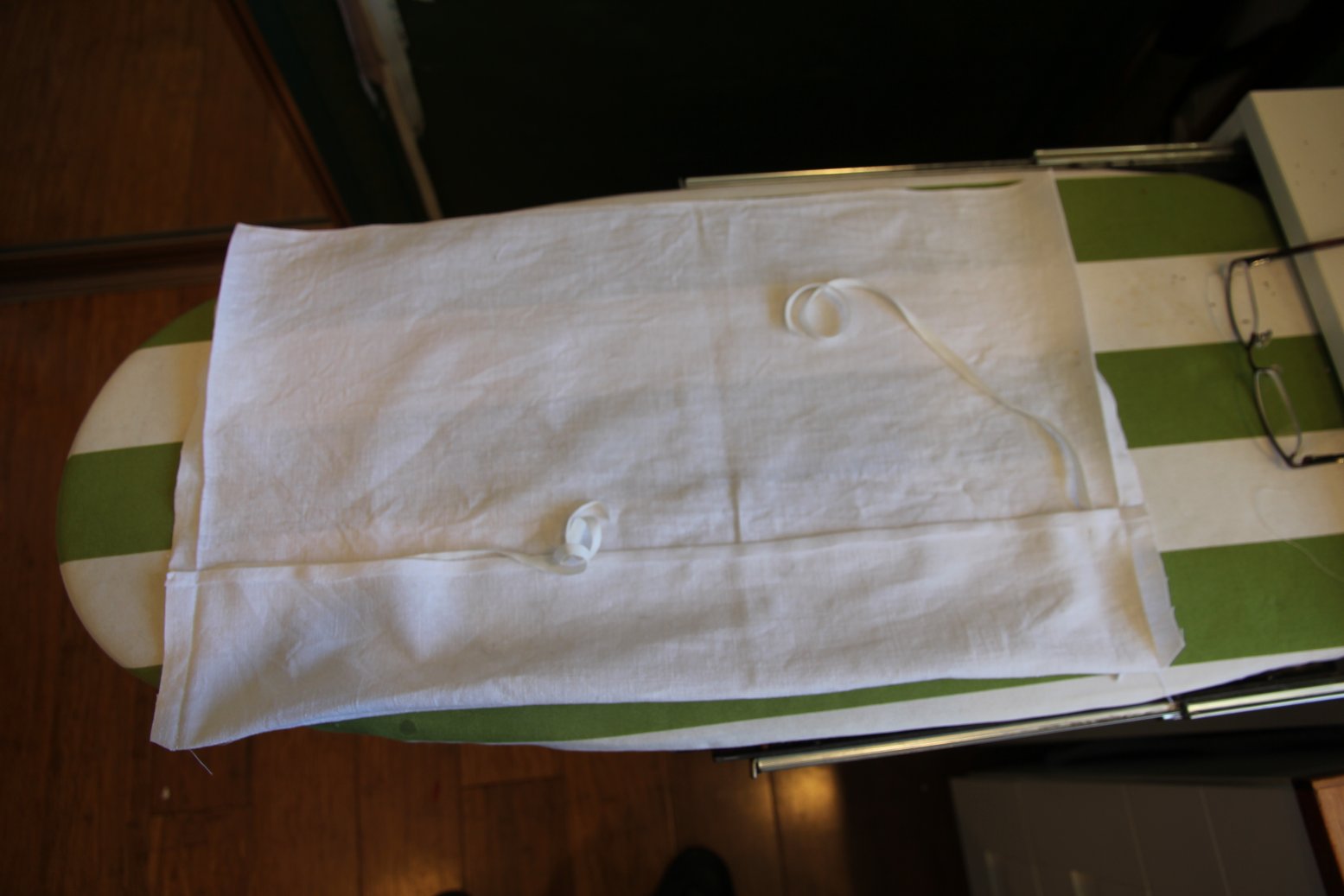

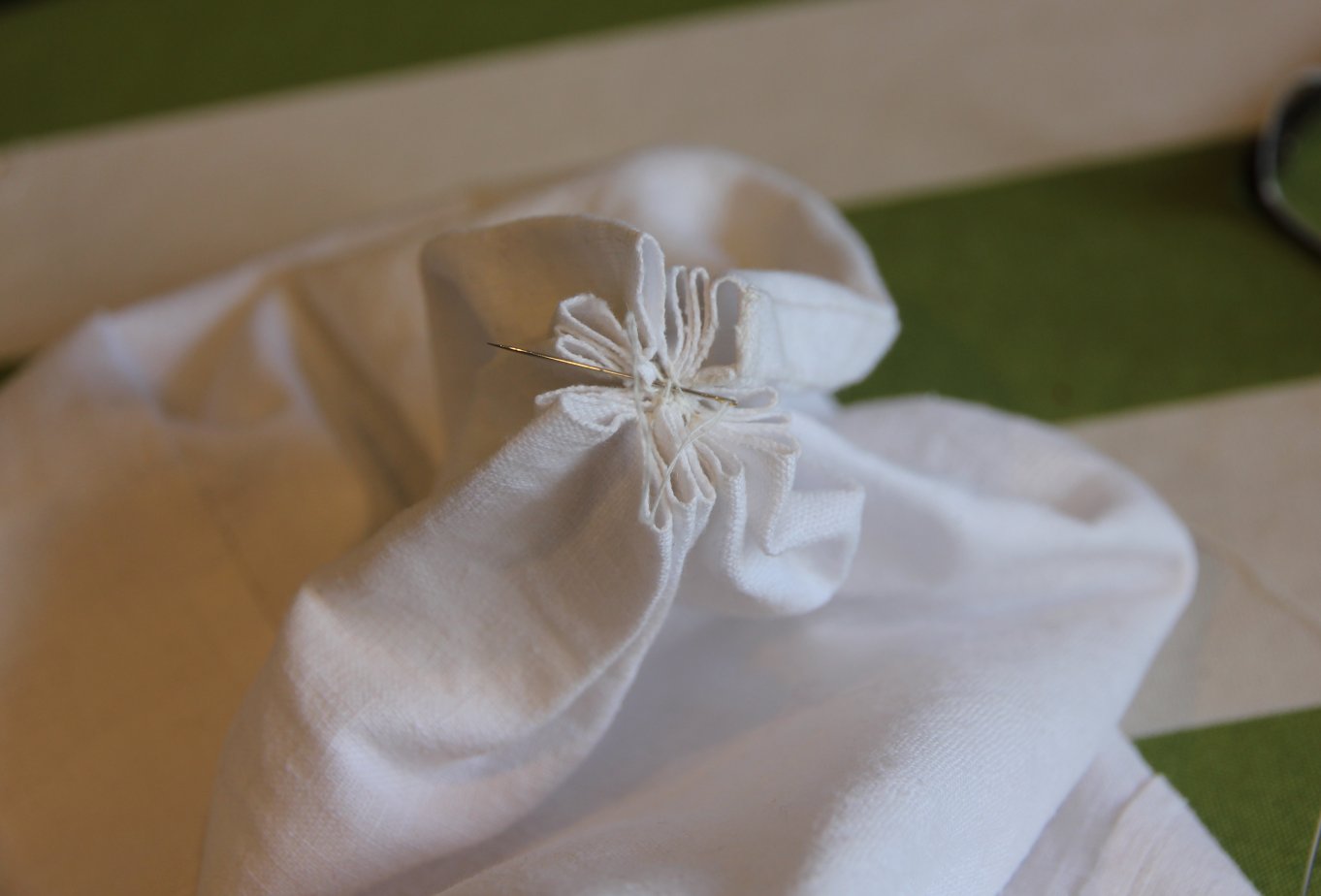
I whip-stitched the two side seams together from the base for about 1/3 of the seam, and sewed on twill tape at the deep hem junction. The I gathered the selvedge edge in small pleats and sewed these together well, then turned it out.
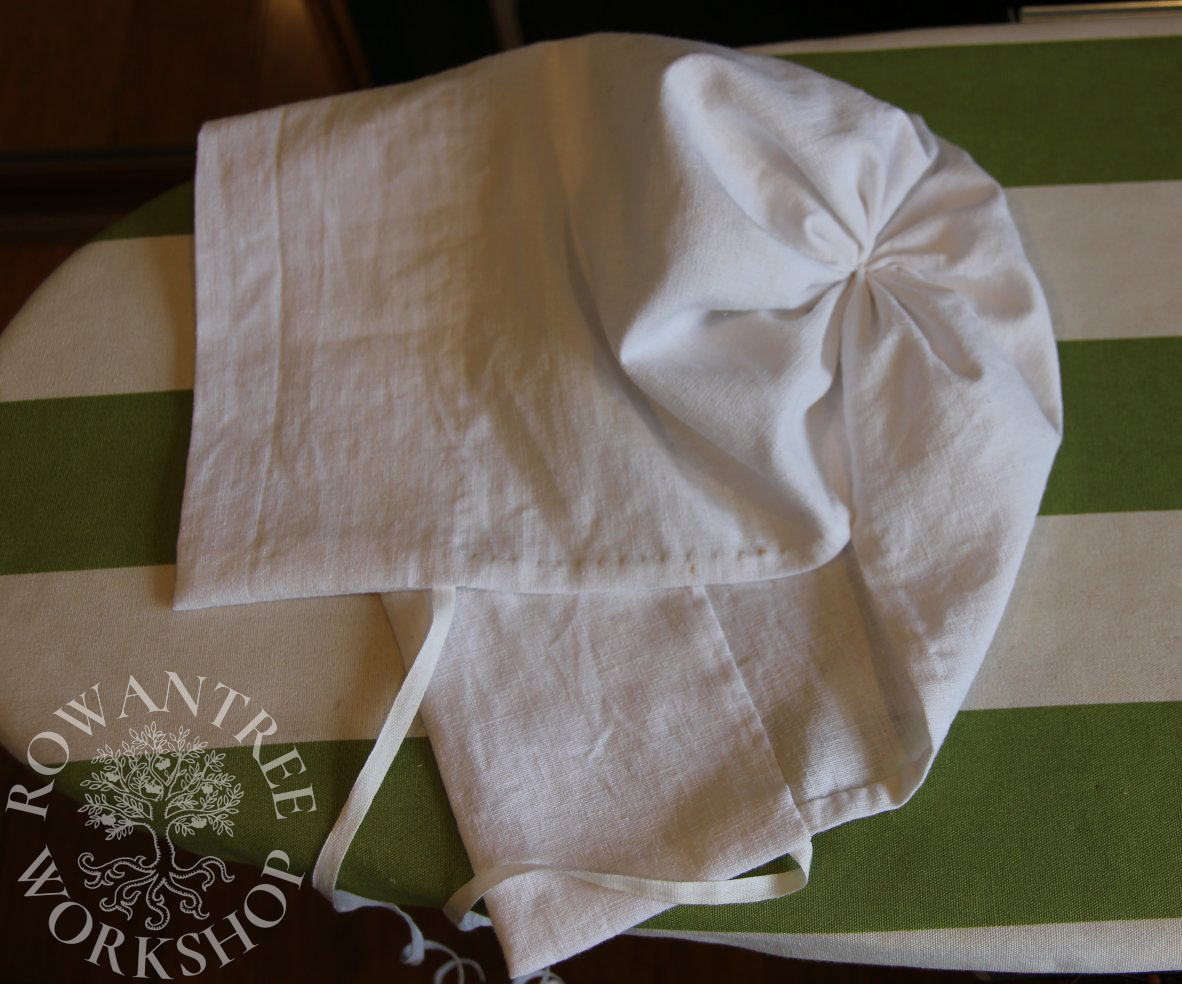
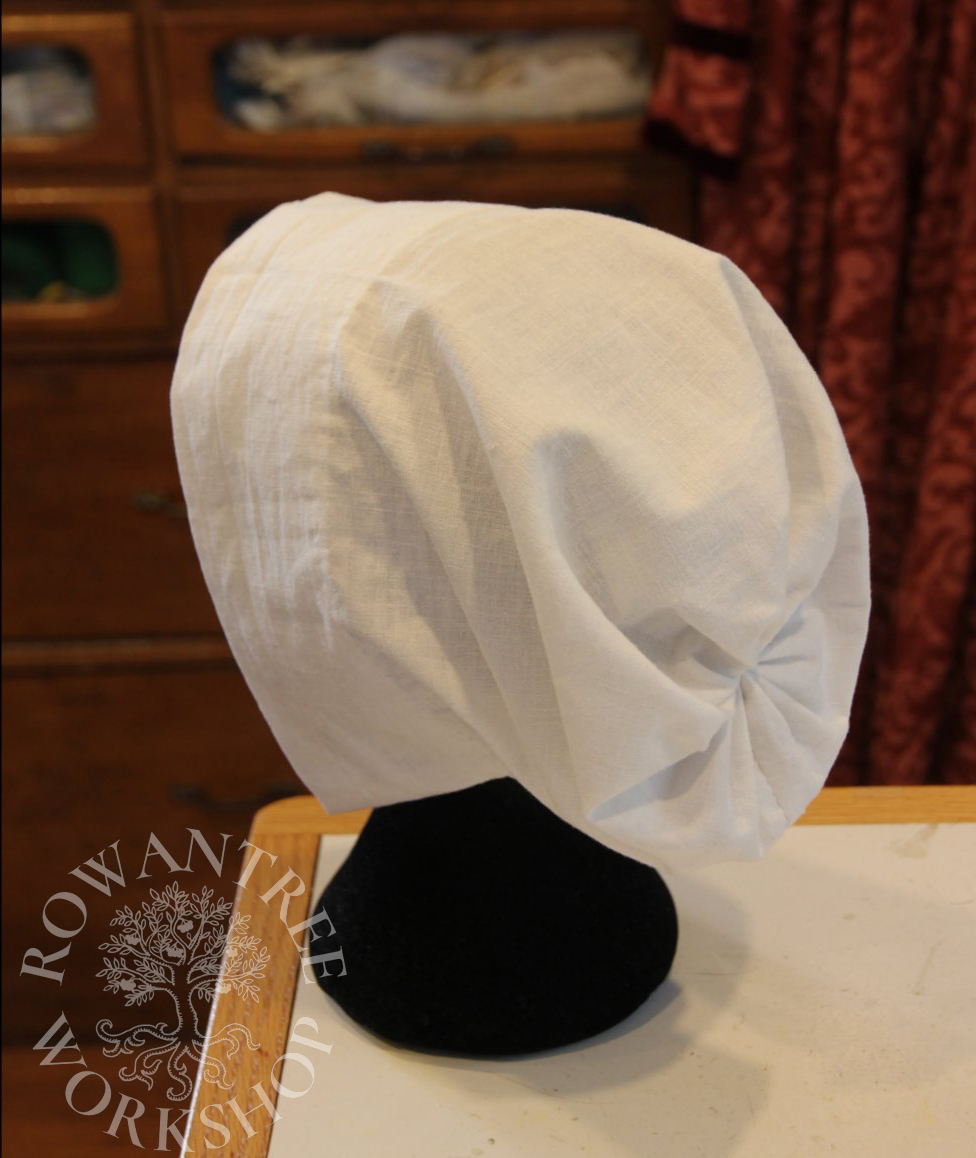
Afterthought
Now I look at the Breughel pictures in higher resolution, I can see a small bead or button at the point of the gathers in a few images. The image from The Fight between Carnival and Lent looks like a red button – it would add a nice extra touch.

